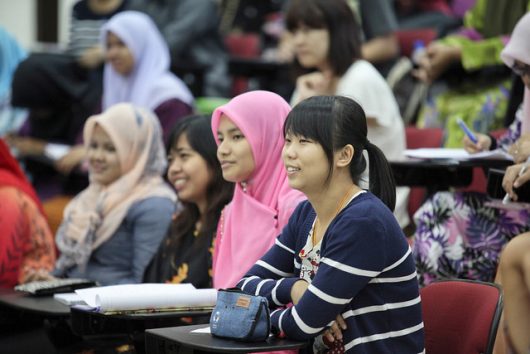Understanding the Issues With Girls’ Education in Malaysia

Girls’ education and access to education have been improving around the world, particularly because of the United Nations Millennium Development Goals which set access to education as a major focus. In particular, girls’ education in Malaysia has been on an upward trend for the past few years.
Enrollment levels for girls are equal to or higher than enrollment for boys across the nation, and a higher number of girls complete advanced education than boys. Enrollment trends are a major way of assessing access to education and inclusion in the education system.
Malaysian Female Participation in STEM
However, while these statistics show real progress and effective attempts at change by the government and other organizations, there are still a number of issues that need to be addressed. For example, the number of girls participating in science, technology, engineering and mathematics (STEM) in Malaysia is significantly lower than that of boys.
Girls in Malaysia need to be encouraged to pursue STEM fields and teachers and programs need to be more gender inclusive and sensitive. As STEM fields continue to grow in the nation, gender disparities will continue to increase unless they are targeted by policy and programs.
Gender Inequality in Girls’ Education in Malaysia
Another issue is that girls’ education in Malaysia is not translating into equal opportunities and empowerment once they finish school. In 2016, the World Economic Forum produced the Global Gender Gap Report which scored and ranked nations on the Global Gender Gap Index. It focused on five main aspects of equality: economic participation and opportunity, educational attainment, health and survival and political empowerment. Malaysia ranked 106 in the world, with a score of 0.666, where 1.00 indicates gender parity and 0.00 indicates the worst inequality.
While Malaysia scored a .985 for educational attainment, girls still do not have equal economic opportunities or political empowerment. This is an area that the government must focus on by implementing programs to target these issues and ensuring that education translates into tangible advantages once girls have left the school system and entered the workforce.
Working to Improve Education in Malaysia
There are a number of organizations that have committed to working on girls’ education in Malaysia, such as UNICEF Malaysia and the All Women’s Action Society Malaysia. These organizations can be an asset to the government and can further the progress that has already been made.
While these are not the only issues challenging gender parity, using a more targeted approach will be beneficial in the long run. With this approach to education and strong planning for the future, Malaysia may be on its way to a more well-rounded society.
– Liyanga de Silva
Photo: Flickr
